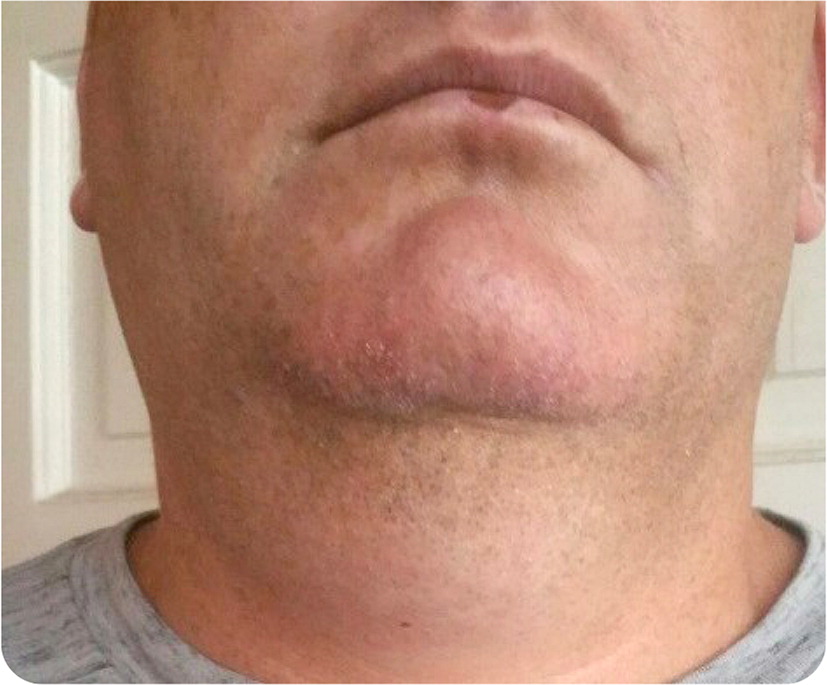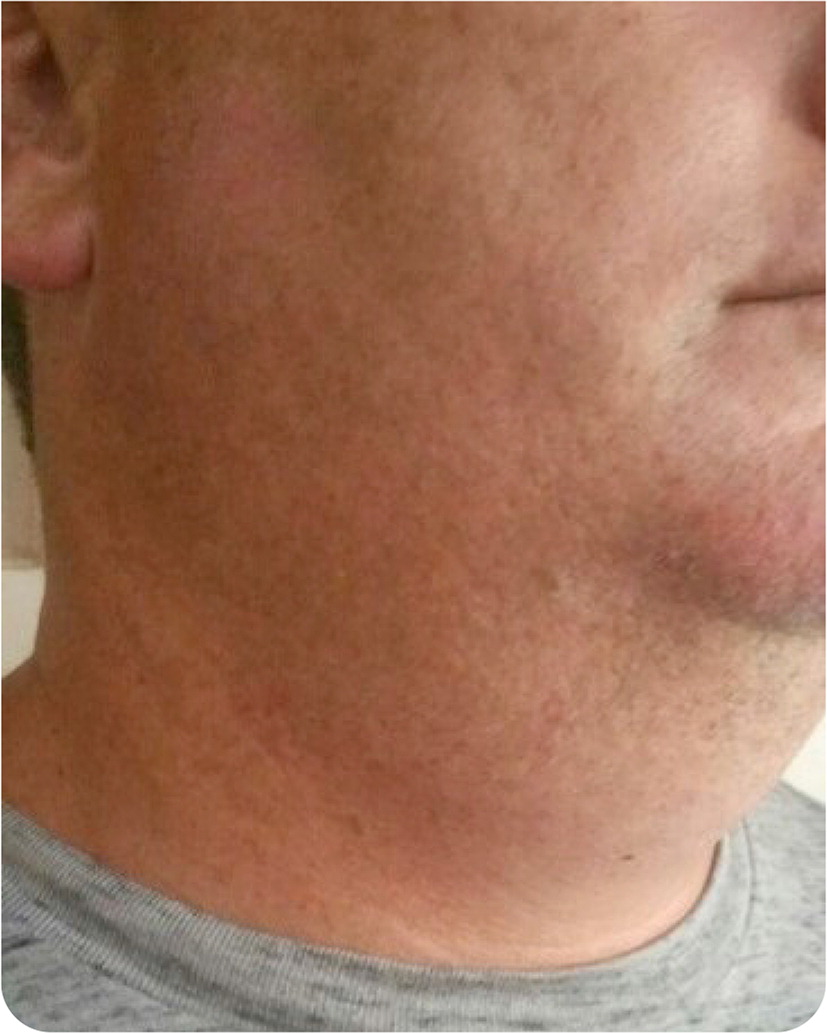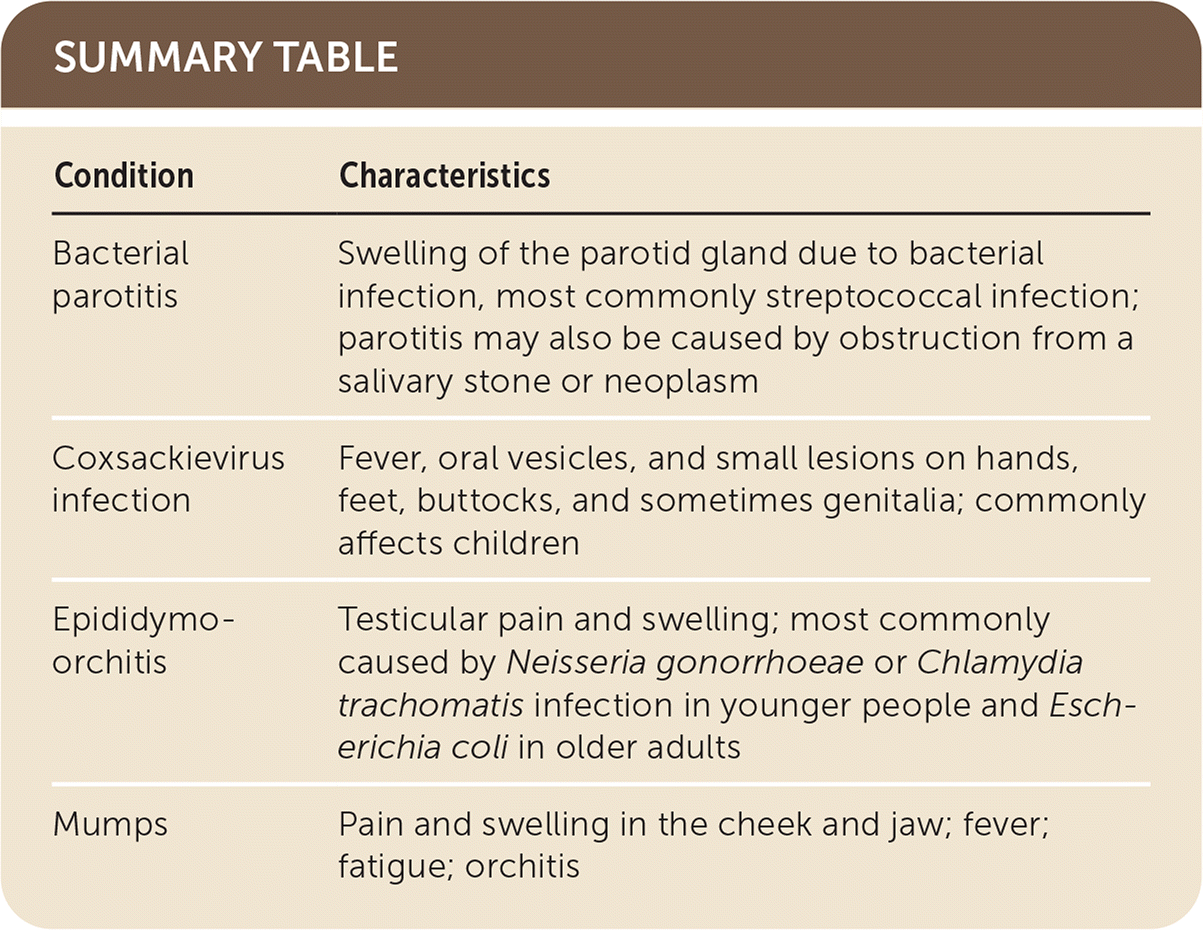
Am Fam Physician. 2023;107(5):543-544
Author disclosure: No relevant financial relationships.
An otherwise healthy man presented with three days of pain and swelling in his right submandibular and cheek areas. In the previous 24 hours, he had also developed left testicular pain that was worse with walking and improved with sitting. He had nausea and a painless canker sore on his lip but remained afebrile and was not fatigued. The patient's 22-month-old son was diagnosed with coxsackievirus infection five days before the patient's visit. The patient received immunity screening for measles, mumps, and rubella for work two weeks before onset of symptoms, and he had immunoglobulin G (IgG) antibodies to all three viruses. His immunizations were up to date.


Initial point-of-care testing included negative rapid streptococcal screening results and normal urinalysis findings. Throat culture and complete blood count findings were negative. Testicular ultrasonography showed orchitis and epididymitis. Serology was negative for mumps IgM and coxsackievirus IgM, and positive for mumps IgG and coxsackievirus IgG.
Question
Based on the patient's history and physical examination findings, which one of the following is the most likely diagnosis?
A. Bacterial parotitis.
B. Coxsackievirus infection.
C. Gonorrhea-related epididymo-orchitis.
D. Mumps.
Discussion
The answer is D: mumps, a highly communicable but preventable disease caused by a paramyxovirus.1 This infection has an incubation period of 16 to 18 days. Mumps has largely been eradicated in the United States since the introduction of childhood immunization in 1967. A single mumps immunization is typically 80% effective in preventing illness.2 In this case, mumps occurred in an adult who had been previously immunized and had antibodies demonstrated by recent mumps IgG titers.
The most common presenting symptoms in patients with mumps are pain and swelling in the cheek and jaw. Fatigue and fever may also be present. Orchitis occurs in up to 30% of nonimmunized males. Pancreatitis, meningitis, and encephalitis are rare but severe complications of mumps.1
Immunized individuals are still at risk of acquiring mumps but typically have less severe illness.1 In this case, a buccal swab polymerase chain reaction–based mumps test was performed because suspicion for mumps was high despite negative IgM serology findings and proven IgG antibodies. The polymerase chain reaction test was positive for a wild-type G genotype of the mumps virus. This type is more common in Europe and some parts of Asia.3 In the United States, immunization targets the mumps type A genotype.4,5
Parotitis is swelling of the parotid gland. This can be secondary to inflammation, obstruction from a salivary stone or neoplasm, or bacterial infection, most commonly streptococcal infection.6
Coxsackievirus is often associated with hand-foot-and-mouth disease, which commonly affects children. Presentation includes fever, vesicles on the oral mucosa and tongue, and small lesions on hands, feet, buttocks, and sometimes genitalia.7
Epididymo-orchitis presents as testicular pain and swelling. It is the most common cause of scrotal pain in adults. The most common infectious etiology of epididymo-orchitis in people 35 years and younger is Neisseria gonorrhoeae or Chlamydia trachomatis. Escherichia coli is more common in older adults. Noninfectious etiologies include trauma and other inflammatory conditions.8

| Condition | Characteristics |
|---|---|
| Bacterial parotitis | Swelling of the parotid gland due to bacterial infection, most commonly streptococcal infection; parotitis may also be caused by obstruction from a salivary stone or neoplasm |
| Coxsackievirus infection | Fever, oral vesicles, and small lesions on hands, feet, buttocks, and sometimes genitalia; commonly affects children |
| Epididymo-orchitis | Testicular pain and swelling; most commonly caused by Neisseria gonorrhoeae or Chlamydia trachomatis infection in younger people and Escherichia coli in older adults |
| Mumps | Pain and swelling in the cheek and jaw; fever; fatigue; orchitis |
